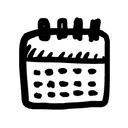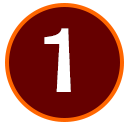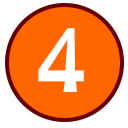Worth 10% of your course grade
Important Dates
| Tu, 2/16 | Portfolio Draft for Peer Review due by 11:59 PM (no grace period) |
 |
| We, 2/17 | Peer Review in class for all who submitted on time | |
| Fr, 2/19 | Portfolio Due by 11:59 PM | |
| Fr, 2/26 | Portfolio Grace Period ends at 11:59 PM |
Goals
The Project Assignment
 You will design and create an academic or professional portfolio where you will publish the work that you do for this course and other courses you have and will take at Virginia Tech. You will write and design text for online presentation, use digital images (and if desired, video and audio), and use basic HTML and CSS syntax.
You will design and create an academic or professional portfolio where you will publish the work that you do for this course and other courses you have and will take at Virginia Tech. You will write and design text for online presentation, use digital images (and if desired, video and audio), and use basic HTML and CSS syntax.
You’ll create your web portfolio using Virginia Tech’s WordPress resources, which will provide the basic tools you need so that you can focus on your multimodal design and learning the basics of HTML and CSS coding.
Step-by-Step Details
 Step 1: Create a WordPress blog and a backup plan
Step 1: Create a WordPress blog and a backup plan
Setup a Blogs@VT site for your Web Portfolio. Realize that your blog will be a public site, so anyone on the Internet can read it. Make wise, professional choices about naming your site and the information you will display.
Decide on a backup plan for yourself. The easiest option is to copy and paste things out into files on your Google Drive, a flash drive, or your own computer. Dropbox works too. You can also go to Tools on the left and then Export to download your content as an XML file.
 Step 2: Set your goals for the project.
Step 2: Set your goals for the project.
Review the Outcomes listed in Canvas for the course. Your portfolio site should demonstrate mastery in all categories for an A on the project. The rubric will be included on the assignment page in Canvas.
All project submissions should include reflection comments that frame the project in terms of audience and purpose. More details on the reflection will be included on the submission page for the project.
 Step 3: Customize your blog
Step 3: Customize your blog
Use the tools within WordPress to customize your site so that it is appropriate for your audience and goals. You need to complete the following tasks:
- Choose a Theme for your blog (under the Appearance tab on the left).
- Use the Widgets (also under the Appearance tab on the left) to customize your sidebar(s), header, and footer (as applicable).
- Use Menus (again under the Appearance tab on the left) to set up the menus for your site.
If you need help, try the WordPress Documentation and FAQs. Try contacting 4Help if you need additional help outside of class. Also remember that you can use the step-by-step WordPress Tutorials & Training at Lynda.com. Most importantly, if a theme, widget, or menu isn’t appropriate for your audience or purpose for any reason, do not use it.
 Step 4: Set-up your content
Step 4: Set-up your content
You will write outline the sections required for your site, after looking at example sites and thinking about your goals. At a minimum, you will include the following content for your site:
- Posts: You will write posts on topics related to your career goals and portfolio topic. By the end of the term you should have a robust blog as part of your site. We will use a 5-minute blog technique, and I will provide optional prompts to help you find topics to blog about.
- Pages: You will write the following:
- an about page, where you tell visitors about yourself. You can revise your identity statement for this page.
- a site information page (like a colophon in a book), where you tell us about the tools you used and the design decisions you made. Be sure that you give credit for any resources (like an image) that you use.
- pages necessary for your portfolio, such as pages for your creative works or essays you have written. These pages can link off the portfolio site to published work (for instance, to an article from the CT).
 Step 5: Submit your project.
Step 5: Submit your project.
When you are finished with the project, you will submit the link to the homepage of your portfolio in the Assignment tool on Canvas. Details on how to submit your work will be included in the post for the due date (February 19).
You will use the Comment section for reflection on your project. Remember that there are no rewrites or revisions after work is graded.
Examples for Inspiration
- eP@VT Gallery
- Secondary English Education
- English Department
- Additional Electronic Portfolios
- Fall 2015 Blogs
 write and design web content, use digital images (and if desired, video and audio), and recognize basic HTML and CSS syntax.
write and design web content, use digital images (and if desired, video and audio), and recognize basic HTML and CSS syntax.
